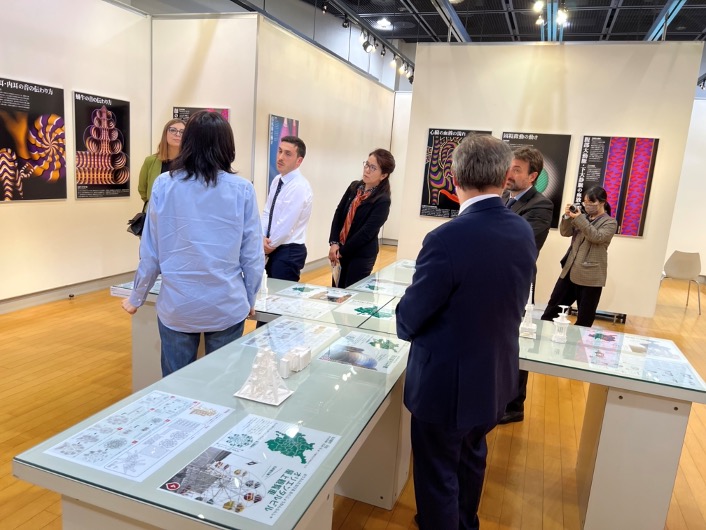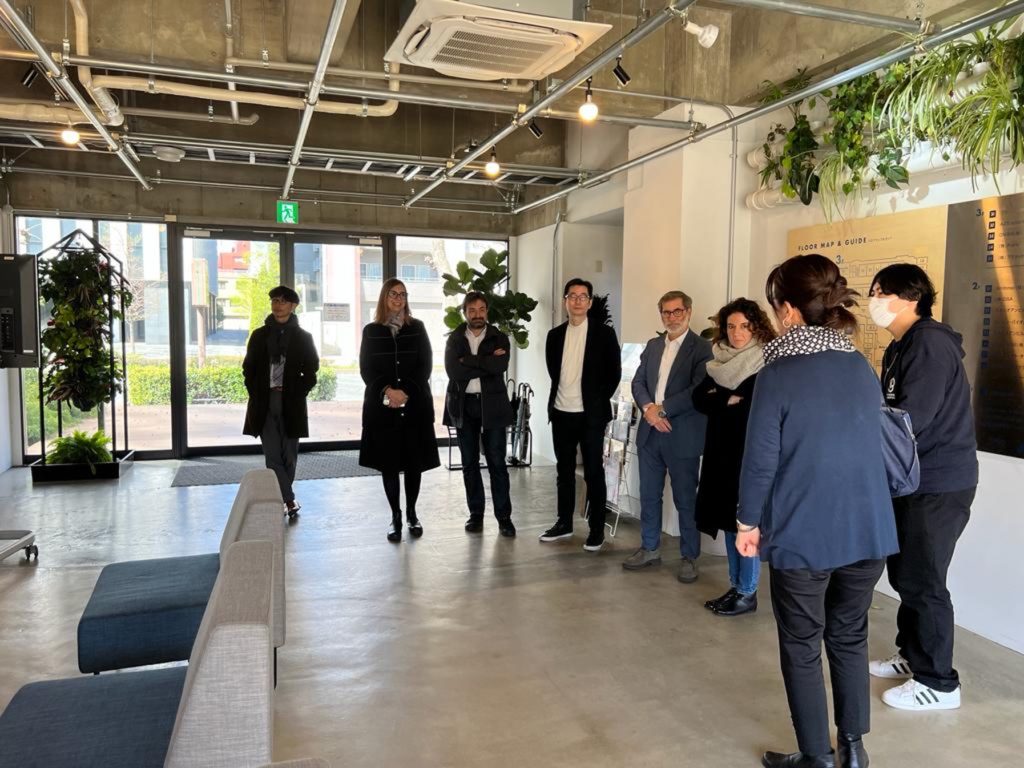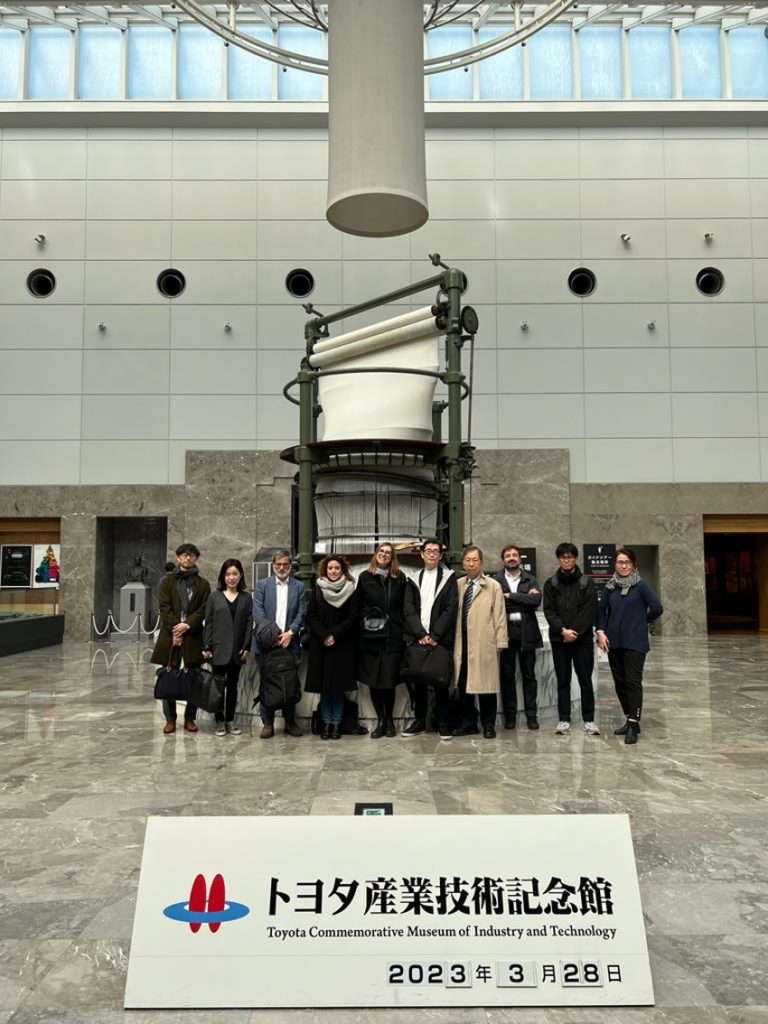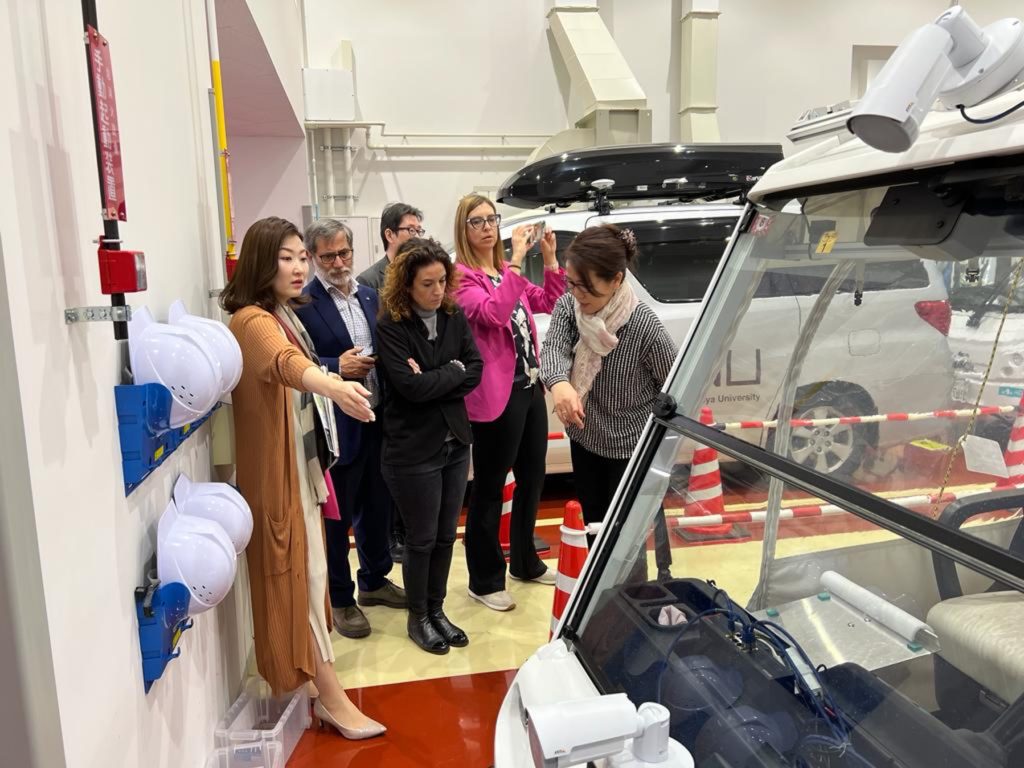Turin City, Italy and Nagoya City, Japan are cooperating on the promotion of the city as a laboratory for open innovation. In November 2022, a delegation of Nagoya City visited Turin City to observe Torino City Labo, an open-air laboratory for co-developing and testing solutions to urban challenges and studied Turin’s CTE NEXT project and the activities of Torino Social Impact. In return, from 27 – 29 March 2023, the delegation of Turin City visited Nagoya City to observe the facilities and projects for open innovation in Nagoya.
Day 1
The Turin delegation visited Nagoya City Hall and met Mayor Takashi Kawamura. They exchanged views on recent developments in the two cities. Directors from the Economic Affairs Bureau and the Tourism, Culture and Exchange Bureau of the City Hall joined the conversation.

Then, they visited Nagoya Innovator’s Garage which was launched by Central Japan Economic Federation and the City of Nagoya in July 2019. It is in a complex commercial building named Nadia Park located in the city center. It is aimed to be a place for entrepreneurs and enterprises to cooperate in creating new businesses and industries. The facility is free address system, and members are free to use any area for nomadic working.

They also visited the International Design Center, which is a third sector company also located in Nadia Park. It was created in 1992 and engaged in the management and operation of the design creation support facilities, as well as design-related businesses.

Day 2
During the morning, the Turin delegation visited Nagono Campus established in October 2019, which is an incubation place of creating new businesses. An elementary school that has a history of more than 100 years was renovated and turned out to be a place people meet, interact, and create. It provides event space, shared office, and normal office, managed by a real estate company. At the opening of the campus, 15 venture companies and 3 large companies moved in. Since then, the campus has been recruiting users for the shared office and coworking space. The campus holds a variety of events, including meetup events for startups, venture capitalists, and persons in charge of planning new businesses at large companies, as well as programming classes for local children. The campus is also an experimental field for 5G communications by a local cable TV company. As 5G experiments are also taking place at CTE NEXT in Turin, the exchange of information between the two cities in this field was discussed.

During the afternoon, they visited Toyota Commemorative Museum of Industry and Technology, established in 1994 under another name but changed to its current name in 2014. The location of this facility is the former site of the Toyota Automatic Weaving Factory, which was completed in 1911. The building was appropriated from a brick factory building that was constructed in 1918. The exhibits are divided into two main sections: the Textile Machinery Hall, dedicated to textile machinery, and the Automobile Hall, dedicated to automobiles. Many of the exhibits have been preserved dynamically, allowing visitors to experience the progress of technology through demonstrations. The museum provided inspiration about the history of industrial development aiming to pass on the importance of crafting to the next generation.


Day 3
The delegation began the day by visiting the National Innovation Complex of Nagoya University, which plays an important role in innovation and the creation of startups in the central Japan region. On the ground floor of this complex building is a facility called Idea Stoa, where people can freely gather and exchange ideas. There, staff from the Nagoya University Start-up Promotion Office introduced start-up activities at Nagoya University, especially by students. One graduate student presented a startup to commercialize the digitization technology using computers that can significantly shorten the time required for design of materials in actual processes of manufacturing.


Various innovation-related projects are being implemented on the upper floors of the same building. The Ministry of Education, Culture, Sports, Science and Technology (MEXT) runs a programme to select and subsidize outstanding proposals submitted by universities across the country as Centers of Innovation (CoI). Nagoya University is selected as a CoI for mobility research in areas such as automated driving technology.

In the afternoon, they visited the Nagoya castle and examined the roots of Japanese manufacturing and industrial innovation by observing the architectural techniques and handicrafts preserved at this historic site.
